EADS is a global leader in aerospace, defence and related services. The Group includes Airbus, a leading global manufacturer of innovative commercial and military aircraft; Astrium, a European leader in space programmes and the third largest space provider worldwide; Cassidian, a global leader in state–of–the–art solutions for armed forces and civil security worldwide; and Eurocopter, offering a large range of civil and military helicopters. EADS employs around 133000 people at more than 170 sites worldwide and generated revenues of € 49,1 billion in 2011.

Figure 1—EADS Products Overview
Introduction and Background
Given the historic levels of investment in PLM by companies in many industries, it should be well known by now that a PLM programme, just like any other major business–related initiative, must be executed and supported by a well–defined and repeatable methodology—a robust methodology that engages all levels of the organisation from the CEO down to the end users—and ensures the institutionalisation of the processes, standards, and enabling technologies being implemented. Unfortunately, the need for a strong methodology is often lost on many organisations, but not EADS when it came to its PHENIX (PLM Harmonisation for ENhanced Integration and eXcellence) programme. Launched in 2007, the goal of the PHENIX programme was to harmonise the group’s PLM tools, processes, and associated standards.
The programme has taken an innovative approach to handle the complexity of dealing with multiple distributed divisions in a highly competitive global business climate. The programme’s participants have performed an important effort in defining and executing EADS’ PLM programme from a strategic and visionary level all the way down to a practical day–to–day execution level. This should continue to bode well for the organisation as it continues to institutionalise the proper use of the PHENIX programme’s PLM–enabling and often–innovative solutions.
From the very early stages, the PHENIX programme was built to be a comprehensive and efficient cross–divisional organisation. Managed by Mr Jean–Yves Mondon, the PHENIX programme has, in its short history, already delivered on many of the programme’s original goals and objectives. In this role, Mr Mondon reports to EADS’ CTO, Mr Jean Botti, a member of the EADS Executive Committee. The programme was sponsored by the EADS CEO, Mr Louis Gallois. Mr Mondon and the EADS PHENIX Team have put in place a sustainable organisational structure and methodology that provides the framework and guidelines for the PHENIX programme. To date, the PHENIX programme has successfully implemented key processes and technology changes and has already achieved several of EADS’ strategic business objectives focused on federating the needs of their various divisions. The objective was to create a new PLM paradigm appropriate for all future and on–going civil, military, and space group product development programmes. The organisation has not been static—it has been allowed to evolve since its inception into a permanent networked structure called the PLM Harmonisation Centre (PHC), which superseded the PHENIX Programme. The timeline is reflected in following figure.
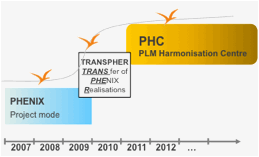
Figure 2—From PHENIX Programme to PHC Organisation
Since CIMdata’s formation some twenty–nine years ago, our work with industrial clients has repeatedly shown that it is impossible to maximise the benefits received from PLM business process enabling technologies without tightly linking the strategic business objectives of the organisation with all aspects of a solution’s technical definition, implementation strategy, and continuous improvement process. The PHENIX programme is accomplishing this by first understanding and communicating why the organisation should strive for a harmonised PLM environment across their various industrial sectors. Some motivations for a harmonised PLM environment include:
- Better protection against industrial issues.
- Driving and leveraging the PLM solution providers.
- Sharing common services.
- Enhancing collaboration between divisions and business sectors.
- Enhancing extended enterprise collaboration.
- Defining and using standards and common terminology and practices that enhance information and best practice sharing.
The second important step that the PHENIX team took was to define the expected benefits, namely:
- Cost and lead–time reduction.
- CManagement of increased business, process and product complexity.
- CEnablement and consistent use of a common toolset that results in lower acquisition, deployment, and support costs.
The following figure illustrates the key steps taken in the earlier stages of the formation and launch of the PHENIX Programme.
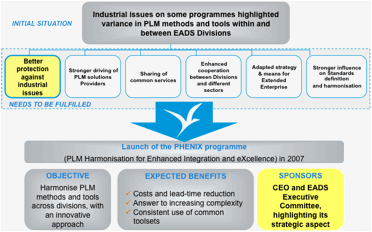
Figure 3—Root Causes and Objectives of PHENIX
During the execution of a major and complex PLM programme like EADS’, it is important to put into place a best–practice framework that seeks to measure and improve the three main dimensions impacted by PLM:
- Business: This dimension represents the business objectives related to PLM as well as required changes and improvements in the organisation and its structure.
- Technology: This dimension represents the objectives related to the PLM–enabling technology.
- People: This dimension represents all the individuals who are involved in the programme and distinguishes between the PLM programme team and the PLM user community.
There are many interdependencies among these dimensions as illustrated in the figure below, e.g., the PLM–enabling technologies will need to support the improved business processes and associated standards, and the people will need to understand these improved processes, and know how to use the technology in support of them.
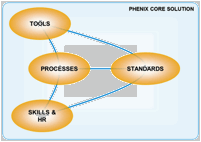
Figure 4—PHENIX Core Solution
For PLM programmes like PHENIX, which are tightly linked to a business’ strategic objectives, it is extremely important to continuously measure the quality and progress of the implementation programme to be able to make timely and appropriate adjustments. Ultimately, a good PLM programme focuses on ensuring that improved business processes and business control are achieved through the implementation of the PLM–enabling technologies. The PHENIX programme team has consistently been able to make such timely adjustments.
CIMdata’s Assessment
As is CIMdata practice, PLM programmes of EADS’ magnitude should be assessed on multiple programme management practice activities. When considering the PHENIX programme, CIMdata has reviewed and provided comments on the following main programme management practice activities:
- Governance: The structure, process, and procedure to control operations and changes to performance objectives.
- Alignment: The programmes’ link to and support of the organisation’s higher–level business vision, goals, and objectives.
- Assurance: Verification and validation of the programme, ensuring adherence to standards and alignment with the business’ vision.
- Management Team: The team that is responsible and accountable for the management of projects, stakeholders, and partners that are part of the overall programme.
- Improvement Process: The continuous assessment of performance; research and development of new capabilities; and systematic application of learning and knowledge to the programme.
Please note that other programme management practice areas, including integration, finances, infrastructure, and planning were not included within the scope of this review. Given the results achieved to date, it would be relatively safe to assume that the PHENIX programme performs reasonably well in those areas. What follows is CIMdata’s assessment and comments related to the five key programme management areas outlined above.
Programme Governance
![]() Overall, the PHENIX programme structure appears to be robust and highly functional. The top–down and bottom–up cross–divisional approach has resulted in the desired harmonisation and the identification and implementation of key PLM process– and technology–related innovations. Unlike many organisations, EADS spent the time and effort to define and staff a central organisation, called “PLM committee,” to oversee the programme.
Overall, the PHENIX programme structure appears to be robust and highly functional. The top–down and bottom–up cross–divisional approach has resulted in the desired harmonisation and the identification and implementation of key PLM process– and technology–related innovations. Unlike many organisations, EADS spent the time and effort to define and staff a central organisation, called “PLM committee,” to oversee the programme.
This PLM committee included representatives from each EADS division. The objective of this management body was to formulate a top–down strategy and to validate the different harmonisation deliverables coming from the individual projects and task forces. Reporting to the PLM Committee, the PHENIX Global Integration Centre (PGIC) was composed of a core team coordinating the different task forces in charge of cross–divisional projects. The PLM Committee, as illustrated below, also includes four activities that span the entire organization:
- ELISA (Enhanced Leading–edge Integrated Software Architecture): The IT/IS PLM test and validation reference platform for EADS in the PHENIX Framework.
- PACT (PHENIX Advanced Cross–Divisional Training): A training, E–learning, and change management programme.
- PLM Standards: An EADS coordination group for PLM standardisation.
- Extended Enterprise: An exchange platform for a new extended enterprise paradigm called PHUSION (PHenix Unified System for Interoperation Of the industrial Network).
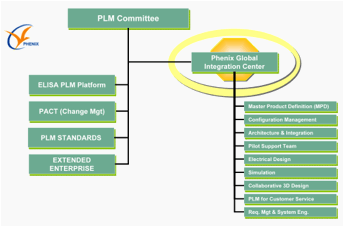
Figure 5—PHENIX Programme Organisation
CIMPA, the Airbus subsidiary for PLM, with an EADS Group mission in PHENIX, played a major role in these task forces. CIMPA acted, and was perceived, as a PLM–neutral internal EADS workforce to support the programme. In particular, CIMPA managed the ELISA platform dedicated to testing, benchmarking, and validating the EADS reference solutions and all types of PLM items.
CIMdata is impressed with the organisational flexibility and creativity that is displayed by the overall approach taken by the PHENIX Team and the participating organisations. The results have been impressive.
To date, the PHENIX programme governance structure has already achieved a number of milestones, including generating more than eleven different policies and handbooks, four thousand pages of processes and other reference documents, eight hundred trained users, the identification and participation of three hundred motivated PLM experts from around the group who executed over seven functional and industrial pilots (e.g., TIGER helicopter), implemented six data and process backbones, and negotiated and executed five common PLM solution contracts. These achievements would not have been possible if it wasn’t for strong a leadership team supported by the highest levels of EADS management and participation from key subject matter experts.
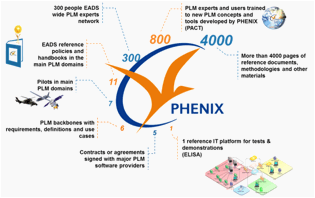
Figure 6—Some PHENIX Results
 In 2011, on the basis of positive results and the subsequent creation of a PLM Network, the EADS Executive Committee decided to transform PHENIX into a permanent organisation at the group level called the PLM Harmonisation Centre (PHC). This PHC organisation is driven by a multidisciplinary board composed of high–level representatives from each EADS division, in particular from the business (e.g., senior engineering managers) and IT managers. This permanent structure has the mission to deploy, maintain, enhance, and reinforce the EADS PLM harmonisation among all EADS divisions—not an easy task given EADS’ size and complexity. The PHC is in charge of analysing each division’s PLM needs and their evolution, defining common solutions that align with the overall programme, sustain and reinforce team integration, and finally develop and maintain key enablers, such as the PLM expert community. The PHC, shown in the figure below, is a streamlined and nimble organisation that is supported by the following three pillars:
In 2011, on the basis of positive results and the subsequent creation of a PLM Network, the EADS Executive Committee decided to transform PHENIX into a permanent organisation at the group level called the PLM Harmonisation Centre (PHC). This PHC organisation is driven by a multidisciplinary board composed of high–level representatives from each EADS division, in particular from the business (e.g., senior engineering managers) and IT managers. This permanent structure has the mission to deploy, maintain, enhance, and reinforce the EADS PLM harmonisation among all EADS divisions—not an easy task given EADS’ size and complexity. The PHC is in charge of analysing each division’s PLM needs and their evolution, defining common solutions that align with the overall programme, sustain and reinforce team integration, and finally develop and maintain key enablers, such as the PLM expert community. The PHC, shown in the figure below, is a streamlined and nimble organisation that is supported by the following three pillars:
- PHC Evolution Committee (EVCOM): Steers the PHC and is responsible for the overall achievement of the programme’s strategic goals and objectives.
- PHC Operational Committee (OPCOM): Is responsible for guiding the different group harmonisation projects (GHPs) and consolidation of issues and operational needs (e.g., progress and results, risks, and opportunities). They focus on studying cross–divisional topics that are candidates for harmonisation.
- ENABLERS: Individuals and teams that provide recommendations and integration ideas to the OPCOM.
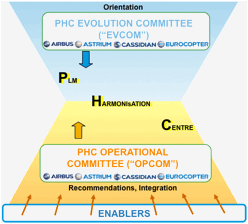
Figure 7—PHC Organization
Each of these committees has members from EADS’ four divisions—Airbus, Astrium, Cassidian, and Eurocopter. Key to the PHC’s success is the recognition that rapid PLM evolution requires continuous cross–divisional collaboration. PHC participating organisations understand this and collectively have done a good job encouraging and facilitating such an open and collaborative environment.
Another important aspect of programme governance pertains to software provider governance. To support this need, the PHC established a mechanism for the software provider community to work with EADS divisional representatives and EADS procurement to best support the needs and requirements of the entire organisation. The PHC is primarily responsible for communicating consolidated needs and requirements to the providers. The software providers are primarily responsible for communicating their roadmaps and delivering customised solutions to the divisions when needed, and extending their commercial off–the–shelf (COTS) solutions as appropriate to better address EADS’ consolidated requirements. The divisions are primarily responsible for communicating their common requirements and needs to the PHC, and their specific divisional requirements to the appropriate software provider (e.g., PTC, Dassault Systèmes, IBM, IGE–XAO, and others). This mechanism has provided EADS with a significant amount of influence on their software partners, and has resulted in savings and streamlining associated software– and services–related procurement activities and related costs.
![]() As an example, the partnership with PTC has allowed EADS to be an essential influencer of PTC’s strategy and their COTS evolution. This approach has led to PHENIXCHANGE, which is an EADS–oriented solution from PTC that will be, in part, implemented into the core PTC COTS solution (i.e., standard Windchill). In this context CIMPA teams play a major role as a cross–divisional group supporting the PHC in its PLM mission (i.e., qualification of the PHENIXCHANGE backbone).
As an example, the partnership with PTC has allowed EADS to be an essential influencer of PTC’s strategy and their COTS evolution. This approach has led to PHENIXCHANGE, which is an EADS–oriented solution from PTC that will be, in part, implemented into the core PTC COTS solution (i.e., standard Windchill). In this context CIMPA teams play a major role as a cross–divisional group supporting the PHC in its PLM mission (i.e., qualification of the PHENIXCHANGE backbone).
Another example is the close relationship that EADS maintains with Dassault Systèmes through the PHC, enabling both EADS and Dassault Systèmes to accelerate the adoption of CATIA and their other products. In addition, the PHC is working with Dassault Systèmes to ensure that EADS–specific requirements are taken into account in Dassault Systèmes’ solution roadmap. EADS believes that the PHC has enhanced its influence on this software provider and others.
Programme Alignment
The PHENIX programme’s ability to gain alignment at the cross–EADS divisional level has been no easy task. The programme had to consider different business models, different product development requirements (e.g., military, commercial, and space), and different divisional overlapping of PLM–related initiatives and an extensive set of existing solutions. Any one of these complexities could have easily derailed the programme, but they didn’t. Throughout the execution of the programme, the PHENIX team realised the following four key truths:
- Harmonisation was the goal, not commonisation (i.e., finding the right balance between 100% commonisation and full differentiation).
- The EADS group entity as well as its divisions had to be willing to invest in the concept and strategy of group–level integration. This meant a willingness to provide resources and accept decisions made by those resources that would change systems, processes, and standards to build and implement a common PLM platform.
- The divisions needed flexibility to implement division–specific requirements on top of the core, and to use those requirements to build them into the core only when appropriate for all of the divisions.
- It was critical to promote and execute the programme and any divisional PLM–related projects in a transparent manner. This meant that all stakeholders had to know what was happening, who was talking to which PLM solution providers, and which requirements were actually critical (as opposed to just being the way things had been done in the past).
If it wasn’t for these four truths, it would have been almost impossible to achieve the level of cost avoidance, organisational agility, silo breaking, and flexibility the group now enjoys.
Programme Assurance
The verification and validation of the programme’s deliverables, and ensuring adherence to standards and alignment with the vision, are on–going efforts. To support this critical programme management activity, the PHC relies on an extensive network of PLM experts from throughout the organisation and a formal benchmarking process. The PHENIX programme’s Expert Community has played a major role in the institutionalisation of PLM in EADS. The community encourages and fosters cooperation among experts, the exchange of best practices, training, gathering of needs and requirements, and the validation of proposed solutions. Currently, there are more than seven task forces focusing on various PLM–related topics, such as 3D design, awareness, and training. This is an excellent structure and one that most companies fail to support.
As mentioned above, benchmarks also play a major role in supporting programme assurance. These benchmarks are fundamental to the PHC and are used to evaluate and select new PLM solutions, and to more clearly define needed enhancements to existing solutions. This is supported by the following five–step process:
- The PHC, following PHENIX, consolidates and prioritises EADS needs and requirements.
- The needs and requirements are shared with the appropriate software providers for them to propose a new PLM Harmonisation Solution for benchmarking.
- A benchmarking activity is organised by the PHC with input from other bodies when and if appropriate.
- The benchmark is evaluated against the programme’s criteria.
- A selection committee comprised of the PHC Board and other selected participants agree on the next steps with regards to the new solution.
Programme Management Team
The PHENIX programme, and now the PHC, have a strong management team led by Mr Jean–Yves Mondon. Unlike many similar programmes CIMdata has reviewed in the past, EADS’ CEO, Mr Louis Gallois, and his fellow members of the Board of Directors, including Mr Jean Botti, the EADS CTO, understand and fully embrace the need for an extended–enterprise PLM initiative. From a very early stage, they invested their time and the organisation’s resources to support and implement a robust programme structure. Mr Louis Gallois, EADS’ CEO since August 2007, has often spoken publically of how critical the PHENIX programme is for EADS’ future. His comments have been backed up by the organisation’s willingness to make the right people available to the programme and the appropriate level of funding—all resulting in measurable benefits and innovative solutions and new ways of working. EADS’ management should be commended for their sizable and active support.
As the programme and the PLM–enabling solutions being implemented continue to evolve, it will be critical for the programme’s various committees and extended supporting members to stay up to date with best practices from within the airspace and defence industry as well as other similar industry sectors. The programme’s participation in a PLM–related Think Tank clearly helps this awareness. The PHENIX and now the PHC management team should also look for other mechanisms to stay up to date with the global PLM market and its evolution.
Concluding Comments
There is a lot to admire in EADS’ PHENIX programme. The scope was huge, covering a multi–division, multinational corporation, and so was the response from EADS. The PHENIX programme benefited from consistent, high–level executive sponsors who provided sufficient funding to support the appropriate scope of work. Experienced senior management created a well planned and executed technology adoption and organisational change programme. Their plans recognised the need for examining the complex interactions between technology, people, and process as part of their programme planning and execution. Another key to their success was access to and cooperation from subject matter experts from across the extended enterprise. The programme also enjoys a close relationship with their key PLM solution providers, Dassault Systèmes and PTC, who are adapting their solution roadmaps to better meet current and future EADS needs. CIMPA, the Airbus subsidiary for PLM, plays an important role, providing in–depth strategic planning and implementation support. In some respects, the PHENIX programme has been a unifying force for EADS, where mostly independent divisions are working together to define their next–generation PLM environment.
An impressive amount of work has already been done. At the core, the programme must continue to evolve from implementation mode to an environment for sustaining and enhancing EADS’ PLM environment. The EADS PLM Harmonisation Centre (PHC) and its management body (EVCOM) must be vigilant to keep abreast of market and technology developments. The OPCOM must continue its successful cross–organisational analysis and planning, supported by the ENABLERS described above. There is a role for more education and communication about PLM and the PHENIX programme for new staff, new partners, and new customers. Programme sponsors and other executives should continue their broad–based communication and collaboration efforts around PHENIX. Making the programme and its success more visible creates more opportunities for interacting with likeminded organisations, and brings potential collaborators and new ideas and technologies to the programme for consideration. Keeping PHENIX vital is essential for EADS to continue to achieve maximum leverage from their PLM investments.




